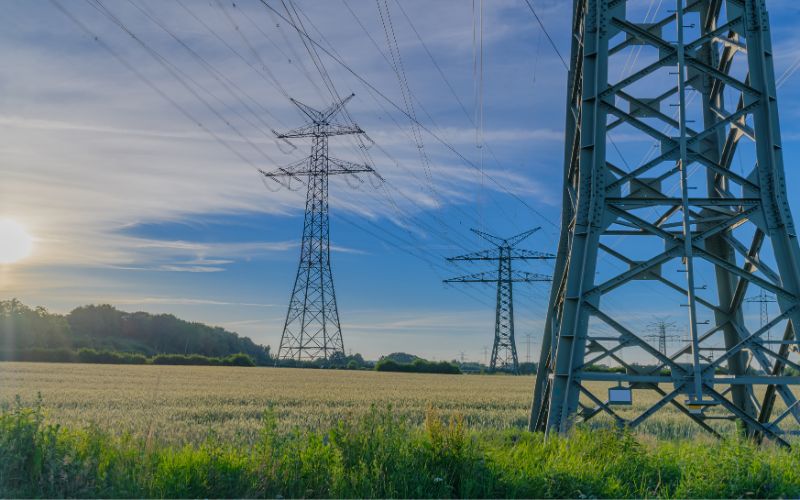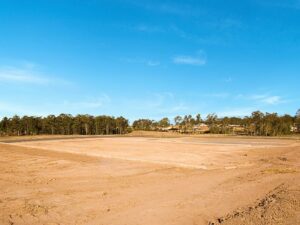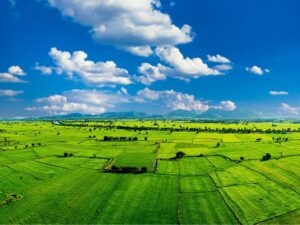Unlocking the full potential of your land through solar leasing is a game-changer with far-reaching implications for sustainability. The importance of renewable energy, particularly solar power, cannot be overstated in our pursuit of a cleaner, more environmentally conscious future.
Solar leasing not only transforms land into a source of sustainable income but also actively contributes to the reduction of greenhouse gas emissions. This practice fosters environmental responsibility and accelerates the transition to a more sustainable energy landscape by facilitating widespread access to solar energy without substantial upfront costs.
Embracing solar leasing isn’t just a prudent economic decision; it’s a vital step toward mitigating climate change and ensuring a resilient, green future.
Solar Resource Assessment
Conducting a comprehensive solar resource assessment is crucial before diving into the world of solar leasing. This involves understanding the solar potential of your land by evaluating factors such as sunlight duration, intensity, and variability. Doing so lets you determine if your land is a prime candidate for solar lease opportunities.
Solar leasing involves partnering with a solar company to install and maintain solar panels on your land. In return, you receive lease payments for the use of your space. To kickstart the process, consider the following steps in your solar resource assessment:
Sunlight Duration
Determine the average number of sunlight hours your land receives each day. This information is crucial in estimating the energy production potential of your solar installation.
Sunlight Intensity
Evaluate the intensity of sunlight on your land. Factors such as latitude, weather patterns, and shading can impact the effectiveness of solar panels.
Variability
Understand the seasonal and daily variations in sunlight. This knowledge helps design a solar energy system that maximizes yearly efficiency.
Remember, a well-executed solar resource assessment sets the foundation for a successful solar leasing venture.
Land Characteristics and Suitability

Not all land is created equal when it comes to solar leasing. To ensure the viability of solar projects, it’s essential to explore the physical characteristics of your land. Factors such as topography, land use restrictions, and available space can significantly influence the feasibility of solar leasing.
Topography: Evaluate the lay of the land. Flat terrains are often preferable for solar installations, as they simplify construction and maximize sun exposure.
Land Use Restrictions: Check for any zoning restrictions or land use regulations that might impact solar development. Understanding these restrictions beforehand can save time and prevent potential roadblocks.
Available Space: Assess the total available space for solar panels. Efficient space utilization is vital to optimizing energy production and lease payments.
By examining these factors, you can determine the suitability of your land for solar leasing. However, it’s crucial to note that assessing whether land will be suitable for solar leasing is a complex process.
Landowners can collaborate with solar companies, considering numerous local and technical factors. Moreover, a lawyer who comprehends the legalities and processes involved in solar leasing agreements and payments must meticulously review solar leasing agreements. This comprehensive approach ensures a smooth and profitable collaboration with a solar leasing company.
A notable example is the city of Orlando, recognized as a ‘clean energy leader’ and the most energy-improved city in the United States. As part of the 100% Renewables Case Study Series, Orlando has implemented various actions to support residents and businesses in transitioning towards renewable energy and developing energy-efficient policies.
This case study exemplifies how embracing renewable energy practices, such as solar leasing, can propel cities toward becoming environmental leaders, fostering economic growth while prioritizing a sustainable and resilient future. This guide will delve into critical aspects of solar leasing, empowering you to maximize your land’s solar potential and contribute meaningfully to the global shift towards renewable and sustainable practices.
Infrastructure and Grid Connection


Once you’ve established your land’s solar potential and suitability, it’s time to focus on infrastructure and grid connection. The existing infrastructure on your land and its proximity to the electrical grid play pivotal roles in the success of solar leasing ventures.
Existing Infrastructure
Evaluate the infrastructure already in place on your land. Access to roads, water, and other amenities can impact the ease of solar project development.
Proximity to the Electrical Grid
Assess how close your land is to the electrical grid. Closer proximity can reduce connection costs and increase the attractiveness of your land for solar leasing.
Feasibility of Grid Connection
Understand the ease with which your solar installation can connect to the grid. A seamless connection is crucial for ensuring the efficient distribution of solar-generated electricity.
By carefully considering these infrastructure and grid connection aspects, you can make informed decisions that enhance the overall feasibility of solar leasing on your land.
Conclusion:
In conclusion, realizing the solar potential of your land through leasing demands a strategic approach. From a comprehensive solar resource assessment to evaluating land characteristics and ultimately understanding infrastructure and grid connection, each step is pivotal in maximizing the benefits of solar leasing. Embark on the journey to property ownership with The American Dream Land, where we specialize in guiding individuals and investors to discover their ideal land parcels at the most favorable prices. Our mission is to transform your property ownership dreams into tangible reality.
Explore the opportunities at https://theamericandreamland.com and illuminate your path to a greener and more lucrative future with us.







